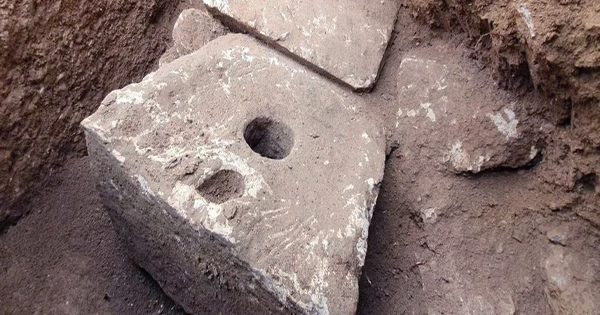The legend of the Headless Horseman is well-known in folklore all around the world. In Ireland, he’s known as the terrible dlachán, whereas in India, he’s known as the brave jhinjhr. However, it appears that something was lost in translation in Germany; instead of a headless man on a horse, they evidently got it backwards. A strange discovery was made during an archaeological dig near Knittlingen, Germany: a 1400-year-old tomb of a man buried with a headless horse.
It’s unclear who the man was, but according to Folke Damminger, one of the archaeologists in charge of the study at the site, he likely “stood in a ‘chain of command’ with the Merovingian rulers on top.” As a result, Damminger added, he would have been “obliged to participate in the king’s campaigns,” which was a full-time job in the Merovingian dynasty. During the nearly 300 years that Merovingian reign lasted, their domain expanded from a small group of Franks living on what is now the French-Belgian border to a massive kingdom that stretched from the western fringe of modern-day Spain to the heart of Germany and Austria in the east.
Depending on when the rider lived, he may have fought the Romans (486 CE), the Visigoths (507 CE), the Burgundians (532 CE), the Raetians (537 CE), the Ostrogoths (536 CE), the Slavs (c. 629 CE), or the Merovingians (almost continuously). And you thought your family had issues?) Women’s and girls’ burials yielded jewelry including pearl necklaces, fibulae (decorative robe clasps), earrings, and bracelets, as well as belt hangers with decorative disks and everyday objects like knives and combs, indicating that our skeletal horseman was not alone in the cemetery.
Meanwhile, male burials were frequently discovered with items such as swords, lances, shields, and arrowheads, indicating the belligerent nature of the time. “Despite their disintegration due to historical robbery, the findings reveal clues of the dead’s social status,” Damminger said in a statement for the Stuttgart Regional Council. Ceramic jars with food — with animal bones and eggshells still inside – and metal bowls in the style of courtly dinnerware were buried alongside the dead.
And this could explain why mourners at the time chose to bury a nearly-complete horse, according to Damminger. “The’staging’ of the departed in his previous status and wealth as a claim of his successors to maintain this status was one function of this [burial] ceremonial,” he told Live Science. To put it another way, the horse should be viewed as a grave good, sent to the afterlife with his rider to ensure that everyone knew how important he – and by implication, his surviving family – was. “Most likely, the horse’s decapitation was part of the funeral process,” Damminger noted.
The team wants to discover more about the strange rider by analyzing teeth and bones for signs about his age, health, and cause of death. Meanwhile, the Knittlingen cemetery continues to yield archaeological gems; the crew has discovered prehistoric ceramics from 4,500 to 5,000 years ago, as well as more modest medieval grave goods. If all goes well, they may be able to locate the horse’s head by spring.
















